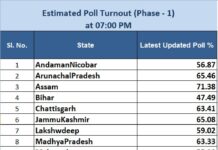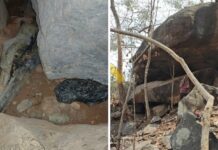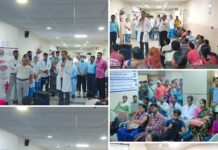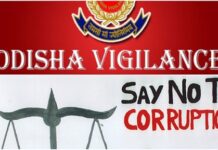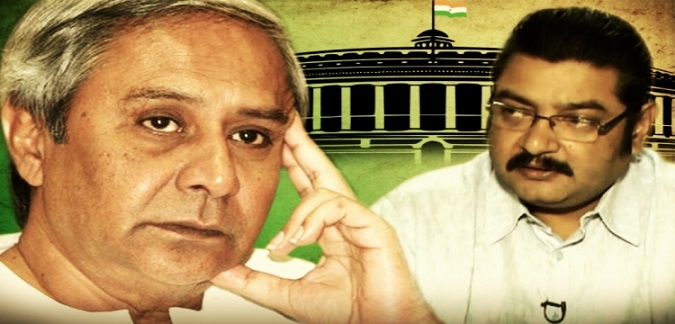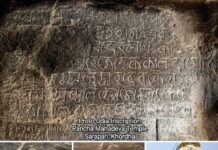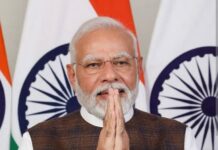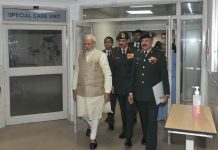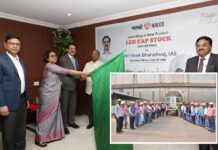By Anurjay Dhal
BHUBANESWAR: With protest continuing in Rajkanika-Aul in Kendrapara in Odisha, over water lifting from River Kharasrota , a tributary of mighty River Brahmani, for the Mega Drinking Water Project worth Rs 892 Crore for drinking water supply to Bhadrak district, facing Baitarani, Salandi ,Mantei and Kansabansa Rivers and backed by COVID-19 restrictions, the office of Engineer-in-Chief , RWSS here at Jal ‘O’ Parimal Bhawan in State Capital, has differed the submission of bidding for the Rs 268.11 Crore , another drinking water project for Aul Assembly seat, held by ruling BJD’s Pratap Keshari Deb, for another 10 days.
“ We had called for national level bidding for the project to be implemented in Rajkanika and Aul blocks of Kendrapara within 24 months of time and last date for submission bidding was earlier slated for October 30 but it has been differed for another 10 days from now due to COVID-19,” Engineer-in-Chief , RWSS, Abhaya Kumar Biswal said. The Engineer-in-Chief, RWSS, Biswal however assured that if both projects are implemented, it will benefit people of both Kendrapara and Bhadrak. About Bhadrak project, EIC Biwal said about 60% works have been completed.
Meanwhile, ruling out water scarcity in River Kharasrota connecting Rajkanika, Aul and Binjharpur of Kendrapara and Jajpur, official sources said each family of Rajkanika and Aul will get a water connection in his home and piped water will be supplied to each household of twin blocks once the project implemented. Local BJD MLA and former Minister Pratap Keshari Deb, even though facing local resistance, but sources said, the scion of Aul Royal family, in fact interested for it as it will benefit a large population under his Constituency, from where he has been representing to State Assembly for last 4 terms including a Cabinet berth in Naveen Patnaik’s Cabinet. Officials however argued that water coming from Jokadia Dam to River Brahmani and Kharasrota is about 10% and 90 % respectively but Government considering in 50-50 ratio. As Kharasrota is deeper than Brahmani, it is housing more water and for Bhadrak project, Government will only use 2% of it from Kharasrota while rest 48% with people of Rajkanika and Aul.
Citing the Central Water Commission guidelines, officials in RWSS said, “as per law, water is first meant for drinking, then agriculture and last for industrial and commercial purposes but unfortunate that two projects including Rs 892 Crore for Bhadrak and Rs Rs 268.11 Crore for Rajkanika and Aul in Kendrapara were only meant for drinking water supply and purely for welfare of two coastal districts facing crisis of clean and safe water,” they added.
Local farmers in Rajkanika and Aul blocks are arguing that while preparing the project for Bhadrak, the State Government had skipped rivers Baitarani, Salandi, Mantei and Kansabansa which are major rivers in the State and instead preferred to extract water from Kharasrota, the smallest river in the State.
Locals living both sides of River Kharasrota ,feels their lifeline will be dried if water lifted for two projects. Sources also maintained that, if local resistance continues against Bhadrak project, Government may drop Rajkanika-Aul project and lift water from Jajpur side to feed people of Bhadrak. EIC RWSS Biswal, however maintained that both project are intended for welfare of people of Kendrapara and Bhadrak and all apprehensions have been addressed properly before execution of these mega drinking water projects. He also said that national level bidders have been invited for the project.
Local farmers in some 60 Panchayats of Rajkanika and Aul have been protesting over water lifting from River Kharasrota for Bhadrak district and they feared their agricultural activities will hit due to shortage of water. The farmers agitation more or less been carried by local Congress and BJP leaders. “This clearly overlooked the fact that the project could adversely impact the people of Rajakanika and Aul blocks in the Kendrapara district who are dependent upon their drinking and agricultural requirements from river Kharasrota” a NGT order said. The project would also adversely affect the entire Bhitarakanika National Park as it is dependent for its survival on this river which is the only source of fresh water as the other rivers are saline in nature, locals alleged.
It may be noted that at about 480 kilometres (300 mi) long, the Brahmani river is the second longest river in Odisha after the Mahanadi. However, if its constituent rivers are included its length extends to about 799 kilometres (496 mi), of which 541 kilometres (336 mi) are in Odisha. It has a catchment area of about 39,033 square kilometres (15,071 sq mi) in Odisha alone. Apart from the Rengali dam, there also exists a barrage shortly before Talcher called Samal Barrage. The Jokadia and the Jenapur anicuts are the other irrigation projects on the river. Near its mouth, the river is also crossed by the Odisha Coast Canal that takes water from it.
After assuming the name of Brahmani, the river crosses the Tamra and Jharbera forests, skirting along National Highway 23. It then passes the town of Bonaigarh in Sundargarh district before being dammed at Rengali in Anugul district. A large reservoir of the same name is created as a consequence. It then flows through the towns of Talcher and Dhenkanal before splitting up into two streams. The main stream flows by the town of Jajpur Road beyond which it is crossed by National Highway 16 and the Kolkata-Chennai mainline of East Coast Railway. The branch stream called Kimiria receives the waters of the Birupa (a distributary of the Mahanadi, Kelua and Genguti before re joining the main stream at Indupur. It then flows crisscrossing through Pattamundai. The river then receives the Kharsuan aka Kharasrota, on its left bank before merging with the Baitarani, a major river, to form the Dhamra estuary.


